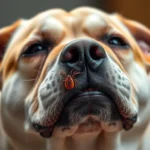
Introduction
Pugs are a beloved breed known for their charming personalities and distinctive wrinkled faces. Originating in China, they have a rich history dating back hundreds of years, often serving as companions to royalty. Pugs are small, sturdy dogs with a playful and affectionate demeanor, making them excellent family pets. However, their unique physical characteristics predispose them to several health problems in pugs that owners should be aware of.
Understanding these health issues is crucial for pug owners seeking to provide the best care for their furry friends. Being proactive about health care can lead to early detection and treatment of potential problems, ultimately enhancing the quality and longevity of a pug’s life.
Common Health Problems in Pugs
Brachycephalic Airway Syndrome
Pugs fall under the category of brachycephalic breeds, meaning they have short noses and flat faces. This unique trait can lead to Brachycephalic Airway Syndrome (BAOS), a condition that affects their ability to breathe properly. The anatomy of a pug’s skull can cause a variety of airway obstructions, leading to significant respiratory issues.
Symptoms to Look For:
– Loud snoring or breathing
– Gagging or coughing
– Difficulty exercising
– Blue-tinged tongue during exertion
Treatment Options and Preventive Measures:
Treatment may range from lifestyle adjustments, such as avoiding intense exercise on hot days, to surgical options that can correct structural abnormalities. Keeping your pug at a healthy weight is also critical, as excess weight can exacerbate breathing issues.
Eye Issues
Pugs are particularly prone to several eye problems due to their prominent eyes and facial structure. Common conditions include corneal ulcers, cataracts, and dry eye (keratoconjunctivitis sicca).
Signs of Eye Problems:
– Excessive tearing or discharge
– Redness or swelling around the eyes
– Squinting or pawing at the eyes
– Cloudiness in the eye
Recommended Veterinary Check-ups and Treatments:
Regular veterinary check-ups are essential to monitor eye health. Treatment can involve medication or, in more severe cases, surgery. It’s crucial to address any signs of eye problems promptly, as early intervention can prevent serious complications.
Obesity
Obesity is a significant concern among pugs, largely due to their love of food and relatively low activity levels. This excess weight can lead to various health problems in pugs, including diabetes, joint issues, and respiratory difficulties.
Health Risks Associated with Obesity:
– Shortened lifespan
– Increased risk of heart disease
– Joint and mobility issues
Tips for Maintaining a Healthy Weight:
To prevent obesity, pug owners should focus on portion control, choose high-quality dog food, and ensure their pets engage in regular exercise. Regular weigh-ins at the vet can help monitor your pug’s weight and overall health.
Skin Conditions
Pugs have sensitive skin and are susceptible to a range of skin conditions, including dermatitis and allergies. These issues can arise due to environmental factors, food allergies, or irritants.
Symptoms and Triggers:
– Itching or scratching
– Red or inflamed skin
– Hair loss
– Odor or discharge from the skin
Treatment and Management Strategies:
Identifying the trigger is crucial for effective treatment. This may involve dietary changes, medications, or topical treatments. Regular grooming can help keep the skin clean and reduce the risk of infections.
Hip Dysplasia
Hip dysplasia is a genetic condition characterized by the abnormal development of the hip joint, leading to arthritis and pain. This issue is common in many dog breeds, including pugs.
Genetic Factors and Symptoms:
Pugs can inherit this condition from their parents. Symptoms typically include difficulty rising, reluctance to exercise, or noticeable pain when moving.
Treatment Options and Lifestyle Adaptations:
While hip dysplasia cannot be cured, treatment options include weight management, physical therapy, and pain relief medications. In severe cases, surgical intervention may be necessary. Providing a comfortable and supportive environment is essential for managing this condition.
Genetic Predispositions
Inherited Conditions
Pugs are prone to several inherited conditions that can affect their health. These genetic health problems often stem from irresponsible breeding practices, which is why it’s crucial for pug owners to understand the breed’s predispositions.
Importance of Responsible Breeding Practices:
When choosing a pug, it’s vital to select a reputable breeder who prioritizes health testing and genetic screening. Responsible breeders strive to minimize the risk of inherited conditions in their puppies.
Testing and Screening
To combat genetic issues, owners should seek out breeders who conduct health testing for common pug-related diseases.
Recommended Tests for Potential Genetic Issues:
– Hip evaluations
– Eye examinations
– Respiratory health screenings
Importance of Health Clearances from Breeders:
Health clearances from breeders can significantly reduce the risk of purchasing a puppy with genetic health problems. Always ask for documentation of these tests before making a purchase.
Regular Health Check-ups
Importance of Routine Vet Visits
Routine veterinary visits are crucial for maintaining your pug’s overall health. Regular check-ups allow for early detection of potential health issues, ensuring prompt treatment.
Recommended Schedule for Vet Check-ups:
– Puppies should see the vet every 3-4 weeks until they are 16 weeks old.
– Adult pugs should have an annual check-up, while older pugs may require more frequent visits.
What to Expect During a Health Exam:
During a vet visit, expect a thorough physical examination, vaccinations, and discussions about diet and exercise.
Vaccination and Preventive Care
Vaccinations are vital for protecting your pug against various infectious diseases.
Essential Vaccinations for Pugs:
– Distemper
– Parvovirus
– Bordetella (kennel cough)
Flea, Tick, and Heartworm Prevention:
Preventive care should also include flea, tick, and heartworm medications. These preventative measures are essential in keeping your pug healthy and free from parasites.
Nutrition and Diet
Choosing the Right Diet
Proper nutrition is key to a healthy pug. Their diet should meet their specific nutritional needs to prevent obesity and other health problems.
Nutritional Needs Specific to Pugs:
Pugs require a balanced diet rich in proteins, healthy fats, and essential vitamins. High-quality commercial dog food formulated for their size and age is often recommended.
Recommended Foods and Supplements:
Consult your veterinarian for personalized dietary recommendations, which may include supplements for joint health or skin issues.
Portion Control and Feeding Schedule
Portion control is critical in maintaining a healthy weight for pugs.
Guidelines for Feeding Pugs:
– Measure food according to the feeding guidelines on the dog food label.
– Divide meals into two or three smaller portions throughout the day.
Tips for Preventing Obesity Through Diet:
Avoid feeding pugs table scraps, and be mindful of treats. Opt for healthy, low-calorie treats to prevent weight gain.
Exercise and Lifestyle
Importance of Regular Exercise
Regular exercise is vital for a pug’s physical and mental well-being. It helps maintain a healthy weight and prevents obesity-related health issues.
Benefits of Physical Activity for Pugs:
Routine exercise can improve cardiovascular health and enhance mood, reducing the risk of behavioral issues.
Recommended Exercise Routines and Activities:
Short walks, playtime, and interactive games are great ways to keep your pug active. Aim for at least 30 minutes of exercise each day, adjusted for your pug’s age and health condition.
Managing Heat Sensitivity
Pugs are particularly sensitive to heat due to their brachycephalic nature. Overheating can lead to serious health problems.
Risks of Overheating in Pugs:
Heatstroke can occur rapidly in pugs, especially during hot weather or excessive exercise.
Tips for Keeping Pugs Cool During Hot Weather:
– Limit outdoor activities during peak heat hours.
– Ensure access to fresh water and shade.
– Use cooling mats or fans indoors.
Home Care and Management
Grooming Needs
Pugs require regular grooming to maintain their coat and skin health. Their short hair sheds moderately, but regular brushing can help minimize shedding.
Best Practices for Grooming Pugs:
– Bathe your pug as needed, typically every few months.
– Clean their facial wrinkles daily to prevent skin infections.
Common Grooming Issues and Solutions:
Be vigilant about ear cleaning and nail trimming; neglecting these tasks can lead to health issues.
Monitoring Health at Home
Pug owners should be proactive in monitoring their pet’s health at home.
Signs of Health Problems to Watch For:
– Changes in appetite or weight
– Lethargy or decreased activity levels
– Changes in bathroom habits
Tips for Tracking Changes in Behavior or Appearance:
Keep a journal to note any unusual behaviors or symptoms. This information can be invaluable during veterinary visits.
Conclusion
Understanding the health problems in pugs is essential for every owner. From brachycephalic airway syndrome to obesity, these issues can significantly affect a pug’s quality of life. Regular veterinary care, a balanced diet, and appropriate exercise are vital components of responsible pug ownership.
Being proactive about your pug’s health not only extends their lifespan but also enhances their overall happiness and well-being. As a responsible pug owner, staying informed and attentive will ensure your furry companion remains healthy and vibrant for years to come.









